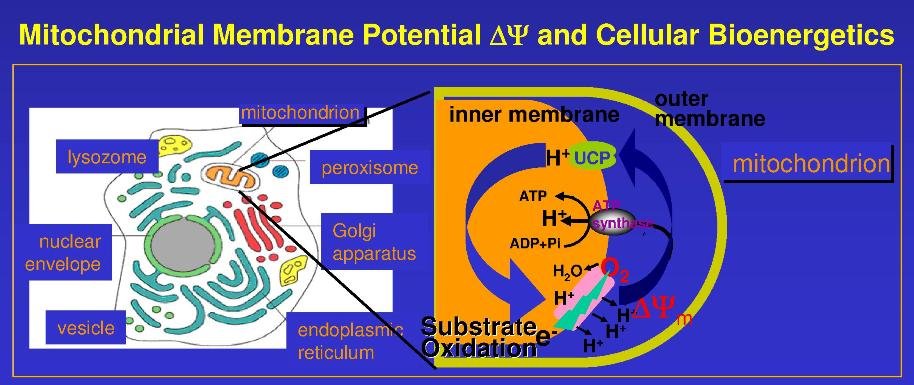Mitochondrial Membrane Potential Service
Screen for Compounds that Affect Cellular Energy Metabolism
The mitochondrion plays a pivotal role in energy metabolism. Mitochondrial membrane potential is an important index of the bioenergetic state of the cell, because it is precisely regulated to cope with the energy needs of the cell. Rapidly proliferating cells (e.g., cancer cells) exhibit higher mitochondrial membrane potentials than do wild-type cells, while senescent or quiescent cells display a lower mitochondrial membrane potential compared to normally dividing cells. In addition, apoptosis is often accompanied by an initial decrease in the mitochondrial membrane potential. Thus mitochondrial membrane potential profiling is very useful in metabolic diseases related drug discovery.

Traditional assays for mitochondrial membrane potential are not amenable to high-throughput drug screening. Our principal scientists have developed high-throughput (HTS) assays in 96/384-well plates that measure the mitochondrial membrane potential in living mammalian cell cultures and yeast cells [Huang, SG. (2002) J. Biomol. Screen. 7: 383-389. Farrelly, E. et al (2001) Anal. Biochem. 293(2):269-276]. These assays allow screening of compounds or treatments that affect the mitochondrial membrane potential.
Summary of the Mitochondrial Membrane Potential Assays
Please email or call 1-510-782-9988 x 2 to request assay service.
Summary of the Mitochondrial Membrane Potential Assays
| Cells | Signal/Noise | Z’ Factor | DMSO Tolerance | IC50 (CCCP) | IC50 (Dinitrophenol) |
|---|---|---|---|---|---|
| Mammalian | 5.2 ± 0.1 | 0.51 | 2.5% | 0.56 µM | 14.1 µM |
| Yeast | 7.2 ± 0.2 | 0.65 | 7.5% | 0.98 µM | 30.2 µM |
Customer Testimonials
"The guys at BioAssay Systems know their science! I had to develop a bioassay for our company and Robert was very quick to respond to keep us up to date. They are knowledgeable and very resourceful. They directed us to one of the bulk suppliers that could give us a really good deal on our active ingredient. They keep very detailed records for our research needs. I would recommend working with BioAssay Systems on your assay development projects!"

"It is a pleasure working together with BioAssay Systems. I brought samples to their Hayward location and received the results in less than 24 hr. The discussion with Robert Z was courteous, open, and with a depth of knowledge. Robert has a PhD from Stanford. Also, Frank Huang, the CEO, had sufficient scientific curiosity to try out our cleanser and provide feedback! This is beyond the call of customer relations. BioAssay Systems is a company with a lot of expertise and a friendly, responsive approach to problem solving. I will enthusiastically continue to work with them to carry out our research."

"I would like to show my appreciation to the Bioassay Systems service team. We are developing an assay to measure the change in lactate concentration of single cell samples using fluorescent microscopy. The BioAssay Systems team was quite helpful in assisting us to optimize their fluorescent L-Lactate assay kit for our unique experimental set-up. The BioAssay Systems team is always friendly and knowledgeable. We know that we can rely on them for fast and professional service."

"While developing biodegradable coatings for Drug Eluting Stents I worked with Bob to develop an accurate, precise and sensitive assay for determining the amount of polymer remaining in tissue. It was a pleasure to work with Bob and his team, they are very thorough, they understand the science very well and they always deliver on time and at the right price. I would highly recommend anyone using BioAssay Systems services in the future."

